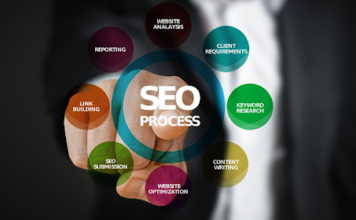In today’s fast-paced business environment, workforce management plays a crucial role in ensuring the efficiency and productivity of an organization. As businesses strive to remain competitive and adapt to ever-changing market dynamics, the need for streamlined workforce management practices becomes increasingly apparent.
What is Workforce Management?
At its core, workforce management involves all activities aimed at optimizing the productivity and performance of employees within an organization. This includes but is not limited to scheduling, time and attendance tracking, payroll management, performance management, and employee engagement. By effectively managing these aspects, businesses can maximize the potential of their workforce and drive overall organizational success.
Benefits of Streamlined Workforce Management
Implementing streamlined workforce management practices can yield a multitude of benefits for businesses of all sizes. Some of the key advantages include:
-
Improved Efficiency: By automating repetitive tasks such as scheduling and time tracking, businesses can free up valuable time for employees to focus on more strategic activities.
-
Cost Savings: Efficient workforce management can help reduce costs associated with overstaffing, overtime, and compliance issues, ultimately leading to significant savings for the organization.
-
Enhanced Productivity: By ensuring that the right people are in the right place at the right time, businesses can maximize productivity levels and optimize resource utilization.
-
Better Decision-Making: Access to real-time data and analytics allows businesses to make informed decisions regarding workforce planning, performance evaluation, and resource allocation.
-
Employee Satisfaction: Streamlined workforce management can lead to improved employee engagement, better work-life balance, and increased job satisfaction, ultimately contributing to higher retention rates.
Key Components of Workforce Management
Effective workforce management involves a combination of various components that work together to optimize workforce performance. Some of the key components include:
-
Scheduling: Creating optimal work schedules that align with business needs while taking into account employee preferences and availability.
-
Time and Attendance Tracking: Monitoring employee attendance, working hours, and absences to ensure compliance with company policies and regulations.
-
Payroll Management: Automating payroll processes to accurately calculate wages, deductions, and taxes, reducing the risk of errors and ensuring timely payments.
-
Performance Management: Setting clear performance goals, providing feedback and coaching, and conducting regular performance evaluations to drive employee growth and development.
-
Employee Engagement: Implementing strategies to foster a positive work environment, promote collaboration, and boost employee morale and motivation.
Choosing the Right Workforce Management Solution
Selecting the right workforce management solution is crucial for maximizing its benefits and achieving long-term success. When evaluating potential solutions, consider the following factors:
-
Scalability: Ensure that the solution can grow and adapt to your business needs as it evolves.
-
Integration: Look for a solution that seamlessly integrates with your existing HR systems and software to streamline processes and enhance data accuracy.
-
User-Friendly Interface: Choose a solution that is intuitive and easy to use, minimizing the learning curve for employees and managers.
-
Compliance: Verify that the solution complies with industry regulations and data security standards to mitigate risks and ensure data protection.
-
Support and Training: Opt for a solution provider that offers ongoing support, training, and updates to help you make the most of the system.
FAQs about Workforce Management
- What is the role of workforce management in HR?
-
Workforce management in HR involves optimizing the utilization of human resources to drive organizational performance and achieve strategic goals.
-
How can workforce management software benefit my business?
-
Workforce management software can automate manual processes, improve resource allocation, enhance data accuracy, and drive employee engagement, leading to increased productivity and cost savings.
-
What are common challenges associated with workforce management?
-
Common challenges include scheduling conflicts, compliance issues, inaccurate time tracking, poor communication, and underutilization of talent.
-
How can businesses measure the success of their workforce management initiatives?
-
Success in workforce management can be measured through key performance indicators (KPIs) such as labor cost per unit, employee turnover rates, productivity levels, and employee satisfaction scores.
-
What are the trends shaping the future of workforce management?
- Trends such as remote work, artificial intelligence, predictive analytics, and employee well-being initiatives are shaping the future of workforce management, driving innovation and transformation in the HR landscape.
In conclusion, workforce management is a critical aspect of organizational success, enabling businesses to optimize their human capital and drive performance excellence. By investing in streamlined workforce management practices and leveraging advanced technologies, businesses can unlock new levels of productivity, efficiency, and employee satisfaction, ultimately positioning themselves for long-term growth and success.



